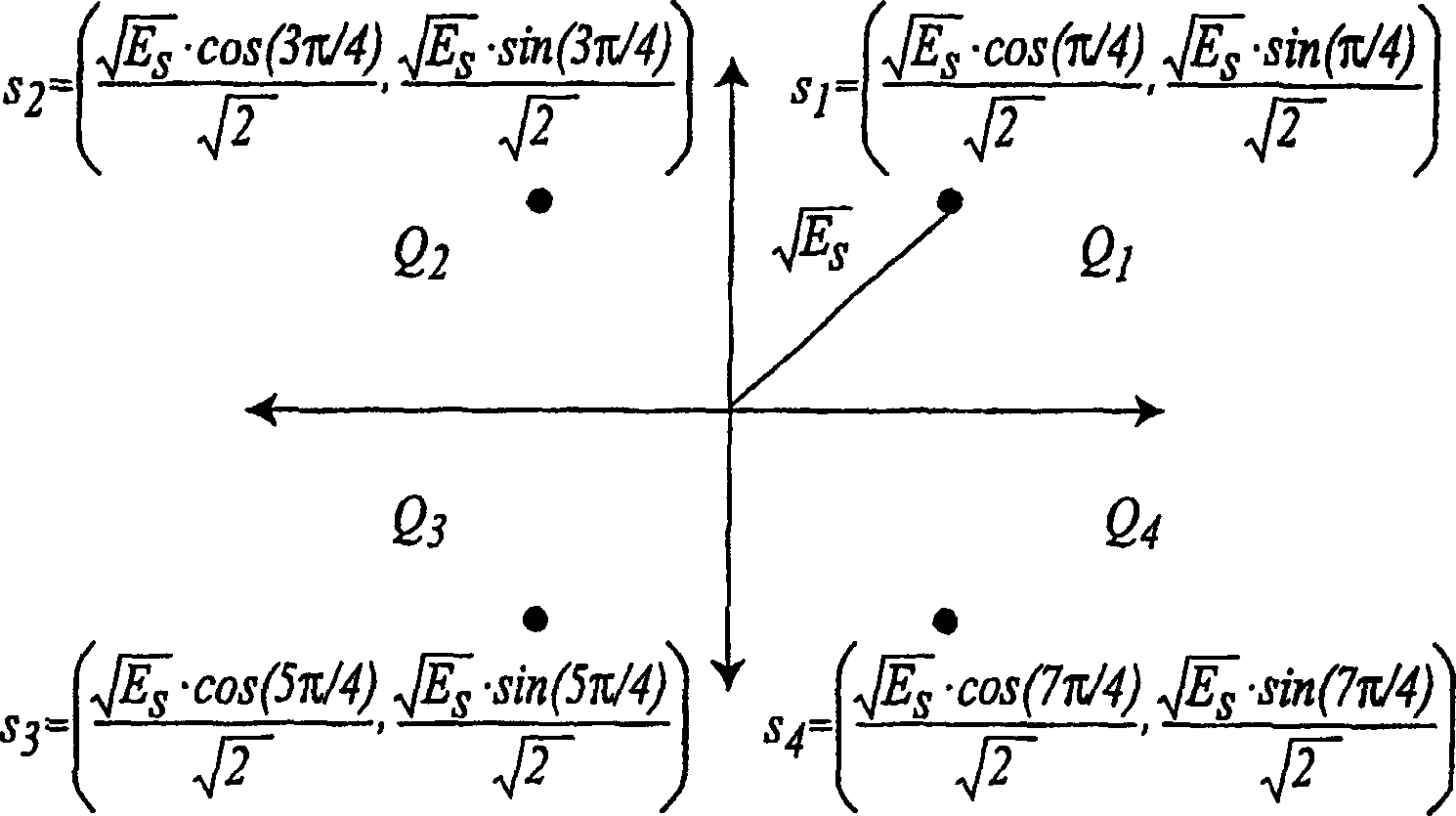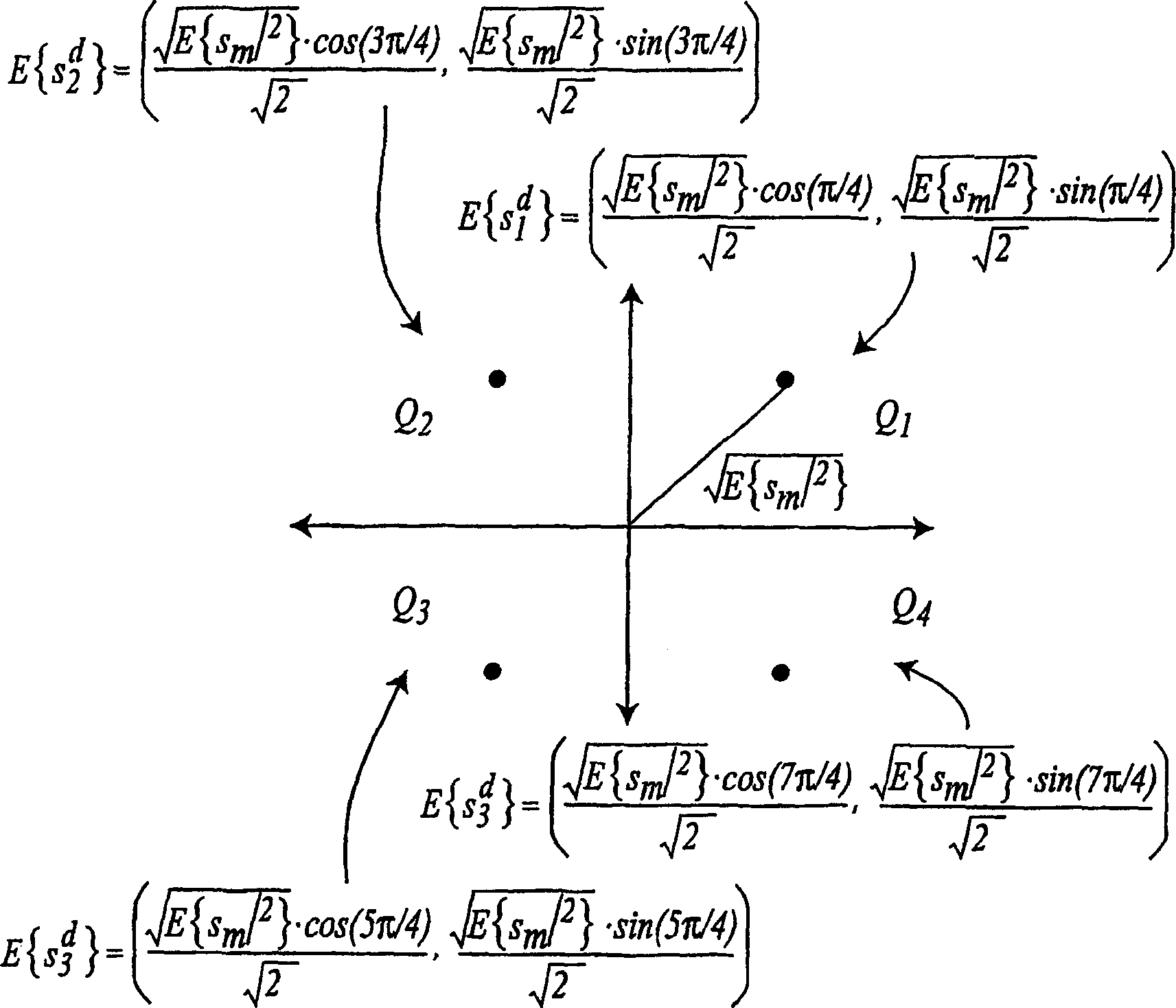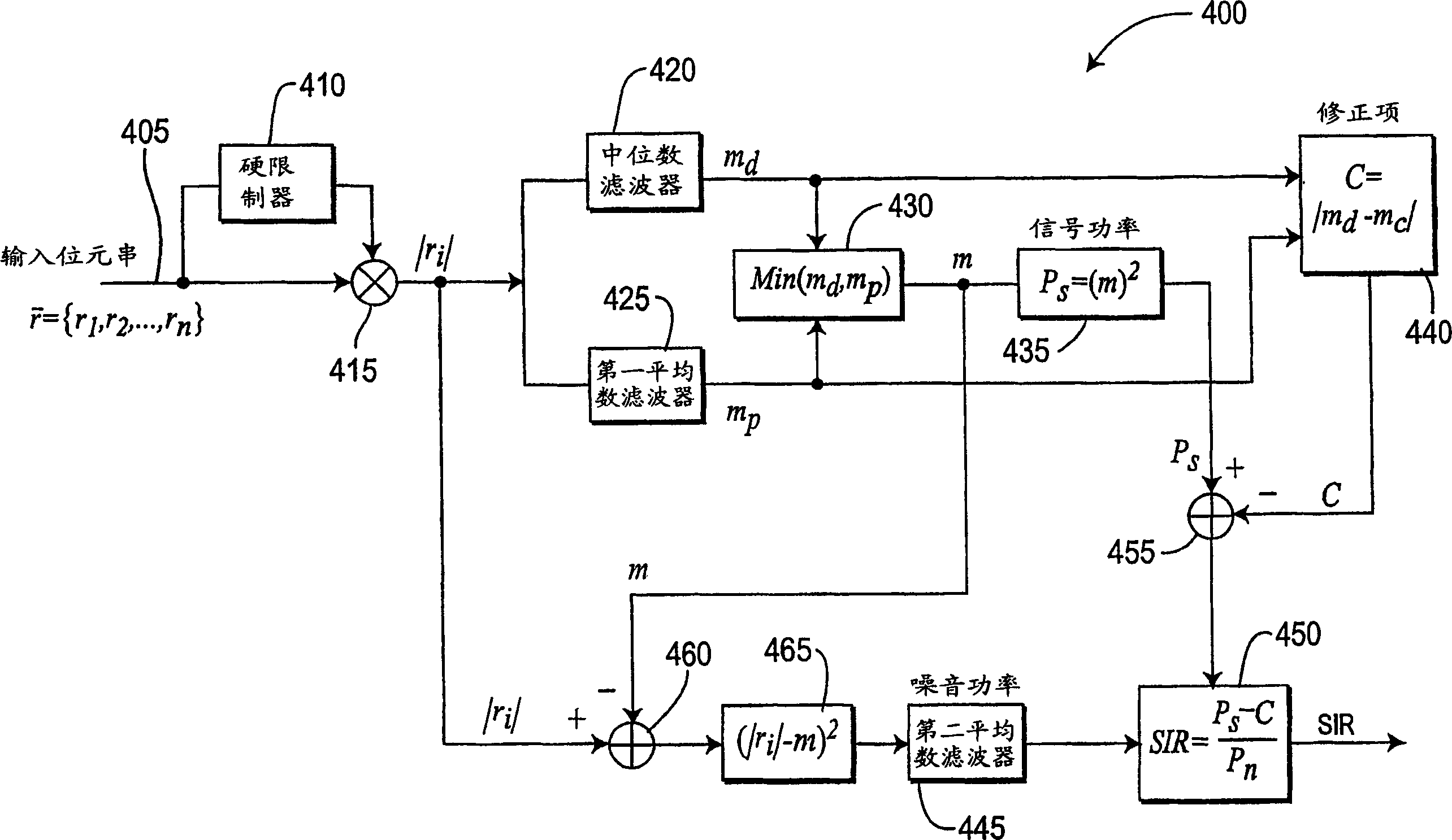Method and apparatus for determining signal-to-interference ratio with reduced bias effect
A signal-to-interference ratio and data signal technology, applied in the field of finding the signal-to-interference ratio, can solve the problems of overestimation of SIR estimation, overestimation of estimation, incomplete separation of signal and interference, etc.
- Summary
- Abstract
- Description
- Claims
- Application Information
AI Technical Summary
Problems solved by technology
Method used
Image
Examples
Embodiment Construction
[0043] The preferred embodiment of the present application is described below, providing a novel SIR estimation process based on a data demodulator output. The present application also provides a SIR estimation device. By definition, a data demodulator output term means the output provided at the final stage of the considered data demodulator. The data demodulator processes the received baseband signal and provides soft-valued estimates of the transmitted symbols. The estimated symbols are further processed by other receiver functions, such as a channel decoder, in order to decode the transmitted data information to the receiving device.
[0044] In the description of the 3GPP system, the demodulator can be configured as a multiuser detection (MUD) receiver or single user detection (SUD) receiver, such as a matched filter, Rake receiver and equalizer (equalizer). Even though the binary phase shift key (BPSK) and quadrature phase shift key (QPSK) demodulation methods appear ...
PUM
 Login to View More
Login to View More Abstract
Description
Claims
Application Information
 Login to View More
Login to View More - R&D
- Intellectual Property
- Life Sciences
- Materials
- Tech Scout
- Unparalleled Data Quality
- Higher Quality Content
- 60% Fewer Hallucinations
Browse by: Latest US Patents, China's latest patents, Technical Efficacy Thesaurus, Application Domain, Technology Topic, Popular Technical Reports.
© 2025 PatSnap. All rights reserved.Legal|Privacy policy|Modern Slavery Act Transparency Statement|Sitemap|About US| Contact US: help@patsnap.com



